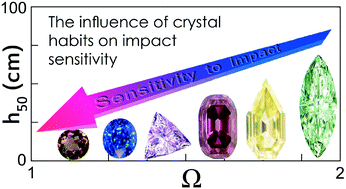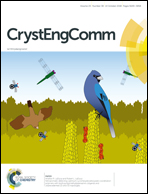Significance of crystal habit sphericity in the determination of the impact sensitivity of bistetrazole-based energetic salts†
Abstract
The effect of crystal growth morphology on impact sensitivity is described quantitatively. A simple theoretical background is presented to distinguish sensitive and insensitive materials with respect to their crystal habits. As a quantitative measure of impact sensitivity, crystal habit sphericity (Ψ) is introduced and the appropriate theoretical background is presented. The corresponding computational support for this approach is performed for 20 crystalline energetic salts based on 5,5′-bistetrazole derivatives, novel high-performance nitrogen-rich explosives. Along with the Ψ values, the corresponding decomposition temperatures, chemical hardness, energy content, and the average number of electrons per atom are also used in the regression equation yielding the sensitivity function Ω. A simple correlation of experimentally measured impact energies (in J) with the product ΨT2dec provides a rather good correlation coefficient (R2 = 0.78), while the function Ω, comprising all the above-mentioned properties has better correlation (R2 = 0.82). The maximum absolute deviation of the predicted impact energies does not exceed ±15 J. The mean and median of the differences between the predicted and experimental values equal zero and 0.5 J, respectively.



 Please wait while we load your content...
Please wait while we load your content...